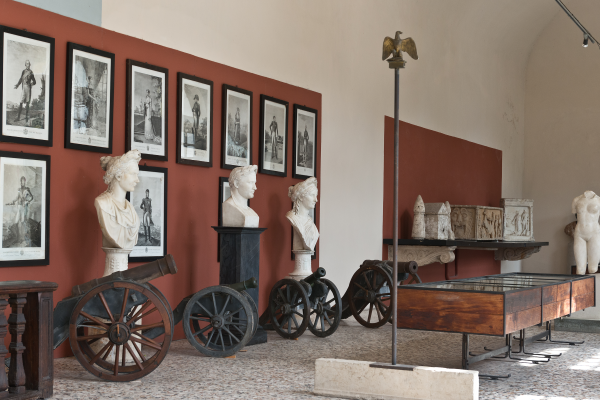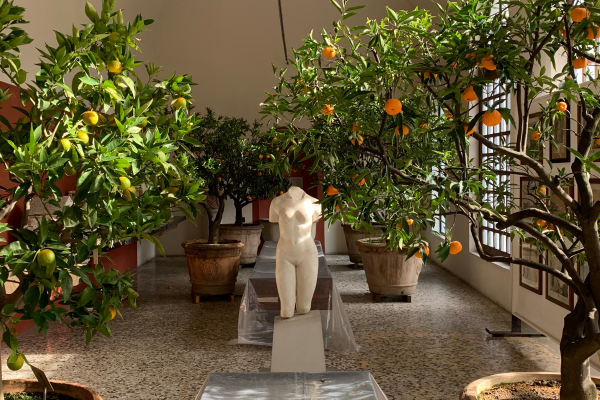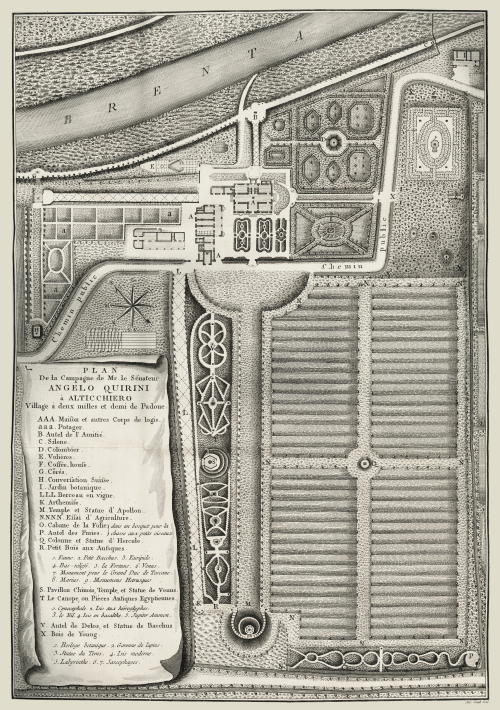I Giardini Di Villa Melzi d'Eril
This sentiment has been passed down through six generations,
first within the Melzi d’Eril family and now within the Gallarati Scotti
family. In the 1960s my father, Count Lodovico, while maintaining the seasonal function of the orangerie, turned it into exhibition space, with the intention of offering visitors a glimpse of the artistic and historical heritage of the estate and its setting. Within the citrus greenhouse he gathered together pieces from the estate’s collections of antiques; artistic works from the Lake Como
area, including two frescoes from the former church of San Giovanni
in Domaso; and documents, keepsakes, and artworks relating to the
founder Francesco Melzi d’Eril and Italy’s Napoleonic period, when
the construction of the villa was undertaken.


The lower level, the Antiquarium, displays the archaeological artifacts and examples of ancient art collected over the years by the members of the Melzi d’Eril and Gallarati Scotti families, in particular by Lodovico Gallarati Scotti.
Some time ago I took up my father’s baton; it is my sincere hope that
my work will be of help to future generations, so that this beauty can
be preserved and shared in perpetuity


La Collezione
lodovico gallarati scotti
The archaeological collection of Villa Melzi d’Eril consists of two distinct cores, which came to the Bellagio estate at different times: the first belongs to an ensemble of ancient artefacts from the Altichiero residence in the countryside near Padua, built for the noble Venetian Angelo Querini. The second core of ancient works of art is owed to the inheritances of the Gallarati Scotti family who, in 1929, upon the death of Josephine Barbò, the widow of Lodovico, third Duke of Lodi, inherited the Bellagio estate from the Melzi d’Eril family.
During the 19th century, the core was the result of donations and purchases, mostly made towards the end of the 19th century. It was thanks to Count Lodovico Gallarati Scotti (1923–2013) with his passion for archaeology and keen management style that the ancient works were transformed into a history and antiques museum, to preserve the most important historical artifacts of the Melzi property in Como. His sensitivity led him to consider himself not the ‘owner’ of the estate, but a ‘custodian’ of works that are the heritage of all: he thus decided to open the villa to visitors and create the museum.
The Gallarati Scotti archaeological collection contains not only fine sculptures, such as the large male torso and numerous Venuses from the Roman era, but also a sizeable group of Corinthian, Etruscan, and Greek Apulian ceramics. Nor is there any lack of 19th- and early 20th-century forgeries—reproductions of ancient pieces made with high levels of craftsmanship—confirming that “archaeological forgery” was one of the many facets of late 19th-century eclecticism, which saw “artistic forgeries” as fashionable “cult objects” in their own right.
Angelo Querini (1721–1796) was an eclectic figure and a connoisseur of the arts and sciences with a proven Enlightenment background. The villa and park in Altichiero were adorned with numerous ancient statues and precious findings, comprising a remarkable collection of antiques. In the years following Querini’s death, the exquisite collection of archaeological artifacts that decorated the villa in Altichiero was removed and dispersed: it was purchased in bulk by the Milanese antiquarian Antonio Sanquirico, who had founded an art shop in Venice in Campo San Salvador, near the San Todaro school.
Around 1830, Giovanni Francesco Melzi d’Eril, second Duke of Lodi, purchased part of the Altichiero antiques from Sanquirico to have them arranged in the park of his Bellagio villa. There were two Egyptian sculptures portraying the lion-goddess Sekhmet and a dignitary of Pharaoh Ramses II, a Roman funerary altar, a 4th-century BC Greek funerary relief—probably of Aegean origin—and two Etruscan burial cippi and an Etruscan cinerary urn from Perugia. To these ancient artifacts must be added an important epigraphic monument from medieval Venice: the so-called colonna infame (“pillar of shame”), which commemorates a conspiracy of 1310 involving members of the Querini family, who plotted against the Great Council of Venice. The conspiracy came to a head in 1310 under the leadership of Baiamonte Tiepolo, and was quashed with a bloodbath by Doge Pietro Gradenigo.

Augusto Giardini, a well-known textile entrepreneur, moved from Milan to Capiago Intimiano in the Province of Como to dedicate himself to his passion for golf, which he could play on the many courses in the area. Giardini was an avid art lover and eclectic collector. His house, designed by the architect Luigi Caccia Dominioni, contained not only ancient artifacts but also works by modern and contemporary artists.
Although held by a private citizen for many years, Giardini’s archaeological collection belongs to the State. Italian law states that any archaeological object found on Italian territory is the property of the State. In 2000, the Superintendency of Archaeological Heritage began a legal case to claim this archaeological collection under State control.
After the death of Augusto Giardini and the sale of his house, the collection moved to the vault of the Cassa Rurale e Artigiana di Cantù (Province of Como). In 2021, thanks to the efforts of the cultural association ArteLario.it and the collaboration of many individuals, including Augusto Giardini’s heirs, it was possible to restore this “treasure” to the public. Thanks to the work of the Superintendency and its consultants, the collection is now open to the public in its new home in the Gardens of Villa Melzi d’Eril.
ArteLario.it is a long-established, non-profit association in the Lake Como area. Its mission is to promote culture in all its expressions: it organizes exhibitions for painting and sculpture and literary and musical events to support both emerging and established artists.
©2025. All Rights Reserved.
Powered by icsoa.it – Alberto Cremonesi